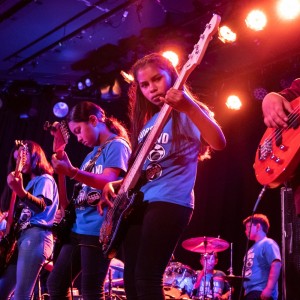Until recently, very few people in the U.S. knew that a great deal of baroque music was composed in Mexico during the colonial era. It's yet another fact about Mexican culture that somehow never crossed the Rio Grande and became common knowledge to us here in the North.
Composers living in New Spain wrote music for New World cathedrals, churches and convents that emulated the music of the great European masters, but had its own uniquely Mexican style.
You've heard of Antonio Vivaldi. But what about Juan de Lienas? And you're probably familiar with the vocal music of Claudio Monteverdi. But how about the vocal works of Fabian Ximeno, organist of the Puebla Cathedral?
Some early music groups in the U.S. have begun to explore the vast Mexican baroque repertoire written in the 17th and 18th centuries, including the Newberry Consort in Chicago.
The Consort will perform "Celestial Sirens II: Music from the Mexican Convent of the Encarnación" at St. Clement Church on May 2, at the University of Chicago on May 3, and at Northwestern University on May 4. More information about these concerts is available at newberryconsort.org.
Members of the Consort discovered this music in the archives of the Newberry Library in Chicago, where they are affiliated.
"It was an accidental kind of thing," said Ellen Hargis, co-director of the Newberry Consort. "We had plans to present a program of Italian convent music, and during our preparations a grad student said to us, "Do you know about these Mexican choirbooks at the Newberry?"
The choirbooks are from the Convent of the Encarnación in Mexico City, and date from the late 16th and 17th centuries. Music by Ximeno and de Lienas are included in the choirbooks, as well as music of an Old World composer, Tomás Luis de Victoria of Spain.
Hargis said that the choirbooks showed corrections to the music that the Sisters had written in between the staves of music--and the graffiti the scribes had scribbled in the margins.
The music is written for women's voices, accompanied by guitar, bajon (baroque bassoon) and organ.
"We know how they used these pieces for devotion," Hargis said. "But what's really important is that the music is fantastic."
Professor Drew Davies of Northwestern University, a scholar of Mexican baroque music, estimates that about 10,000 pieces of music from this era exists today.
"The majority of these composers were born in Spain and came over to the New World," Davies said. "But some of them were born in New Spain, and a few of them were mulatto or mestizo."
"The music is so good, and it's so clearly Hispanic," Hargis added. "It's got a rhythmic complexity that evokes the villancicos, or folk songs of Spain."
An example of a Spanish villancico familiar to modern listeners is "Ríu Ríu Chíu," often sung as a Christmas carol:
Hargis has even more to say about the Celestial Sirens program in a video produced by the Newberry Consort. For more information about this program, watch the Consort's video below or visit newberryconsort.org.



